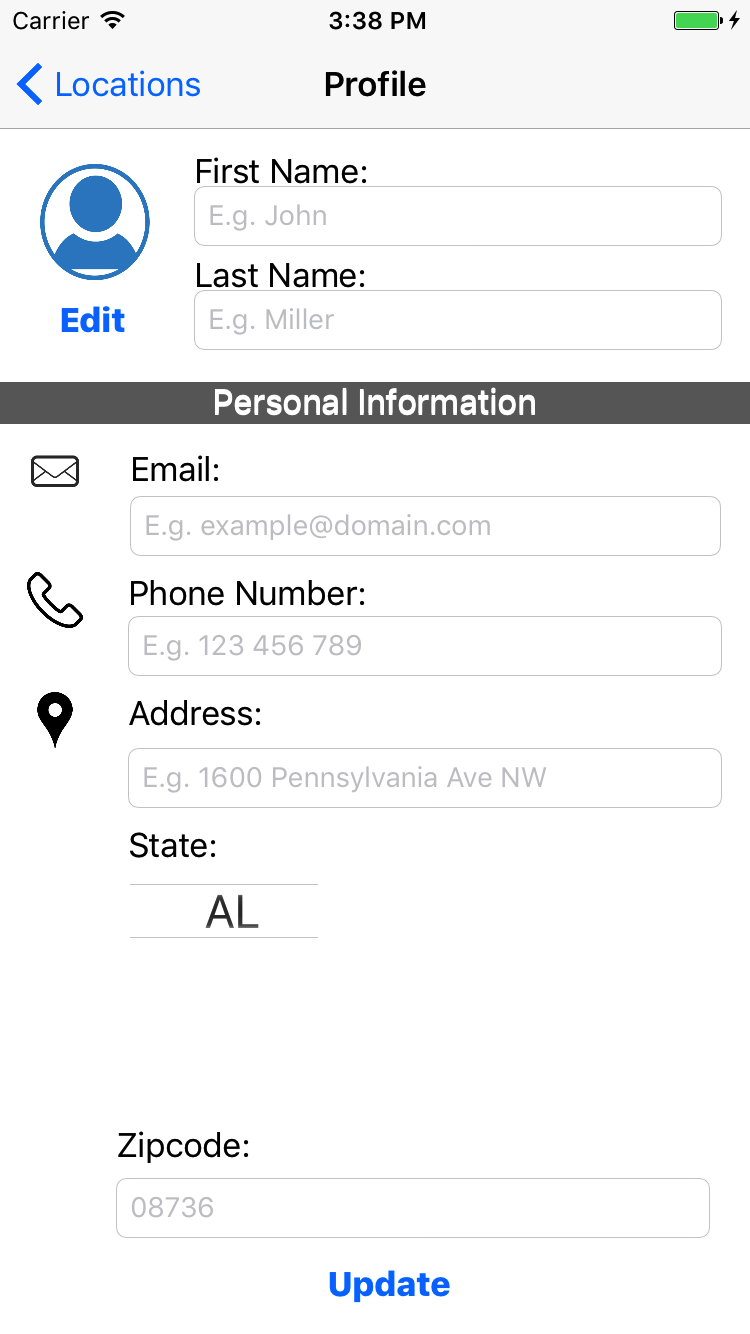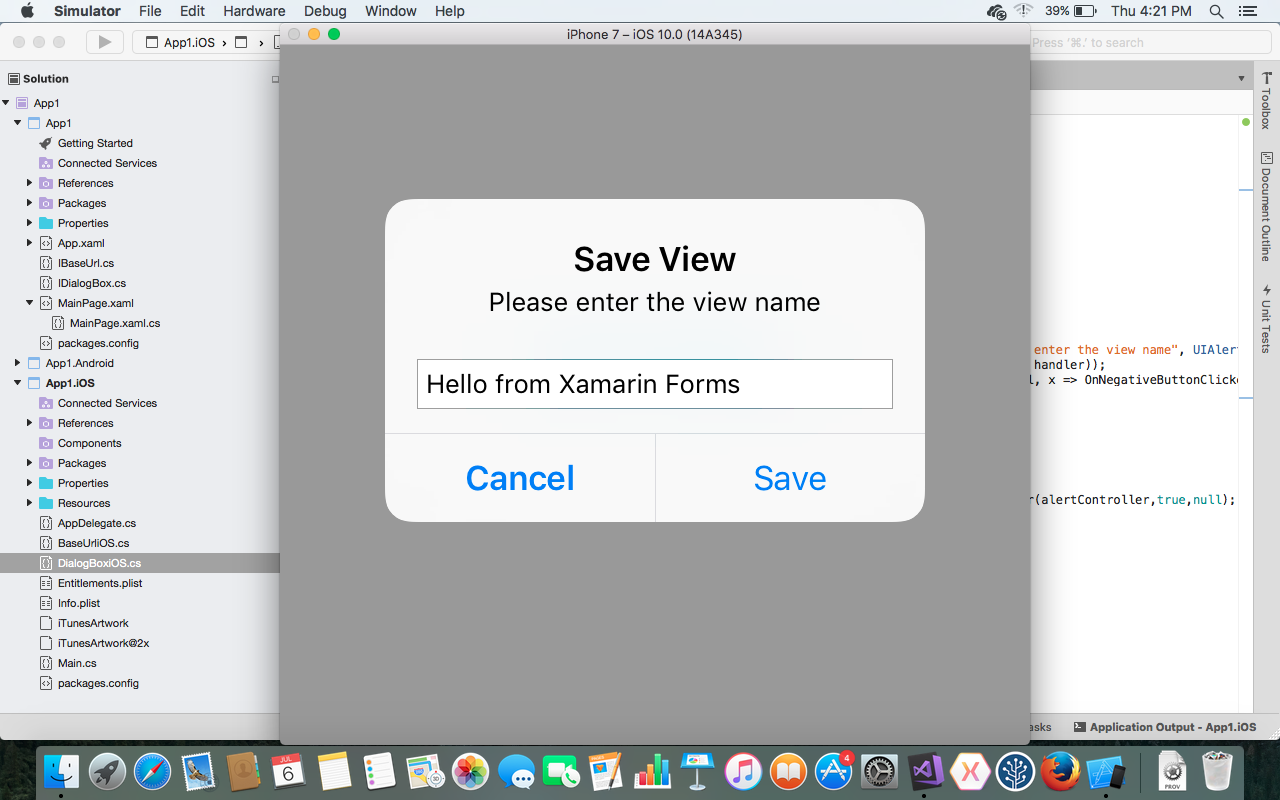Announcement of Form9Patch
Xamarin Forms is great for developing apps on Android and iOS but it is missing two important tools for developers: scalable images and PCL multi-screen image management. Android developers use NinePatch bitmaps and the drawable directory naming convention for this purpose. Likewise, iOS developers use ResizeableImageWithCapInsets and the @2x, @3x, @4x file naming convention for this purpose.
Forms 9 Patch enhances Xamarin Forms to enable multi-resolution / multi-screen image management to PCL apps for iOS and Android.
What is it?
Simply stated, Forms9Patch is two separate elements (Image and ImageSource) which are multi-screen / multi-resolution extensions of their Xamarin Forms counterparts.
Forms9Patch.ImageSource
Xamarin Forms provides native iOS and Android multi-screen image management (described here). This requires storing your iOS images using the native iOS schema and storing your Android images using the Android schema. In other words, duplicative efforts to get the same results on both Android and iOS. Forms9Patch.ImageSource extends Xamarin.Forms.ImageSource capabilities to bring multi-screen image management to your PCL assemblies - so you only have to generate and configure your app's image resources once. Forms9Patch.ImageSource is a cross-platform implementation to sourcing multi-screen images in Xamarin Forms PCL apps as embedded resources.
Forms9Patch.Image
Forms9Patch.Image compliments Xamarin.Forms.Image to provide Xamarin Forms with a scaleable image element. Scalable images are images that fill their parent view by stretching in designated regions. The source image for the Forms9Patch.Image element can be specified either as a Forms9Patch.ImageSource or a Xamarin.Forms.ImageSource. Supported file formats are NinePatch (.9.png), .png, .jpg, .jpeg, .gif, .bmp, and .bmpf.
Example code
After adding the file bubble.9.png to your PCL project assembly as an EmbeddedResource, you can display it using something like the following:
var bubbleImage = new Forms9Patch.Image () {
Source = ImageSource.FromResource("MyDemoApp.Resources.bubble.9.png"),
HeightRequest = 110,
}
var label = new label () {
Text = "Forms9Path NinePatch Image",
HorizontalOptions = LayoutOptions.Center,
}
Example XAML
In Xamarin Forms, access to embedded resources from XAML requires some additional work. Unfortunately, Forms9Patch is no different. As with Xamarin Forms, you will need (in the same assembly as your embedded resource images) a simple custom XAML markup extension to load images using their ResourceID.
[ContentProperty ("Source")]
public class ImageMultiResourceExtension : IMarkupExtension
{
public string Source { get; set; }
public object ProvideValue (IServiceProvider serviceProvider)
{
if (Source == null)
return null;
// Do your translation lookup here, using whatever method you require
var imageSource = Forms9Patch.ImageSource.FromMultiResource(Source);
return imageSource;
}
}
Once you have the above, you can load your embedded resource images as shown in the below example. Be sure to add a namespace for the assembly that contains both your MarkupExtension and your EmbeddedResources (local in the below example).
<?xml version="1.0" encoding="UTF-8"?>
<ContentPage
xmlns="http://xamarin.com/schemas/2014/forms"
xmlns:x="http://schemas.microsoft.com/winfx/2009/xaml"
xmlns:local="clr-namespace:MyXamlDemo;assembly=MyXamlDemo"
x:Class="MyXamlDemo.MyPage"
Padding="5, 20, 5, 5">
<ScrollView>
<ScrollView.Content>
<StackLayout>
<Label Text="Xamarin.Image"/>
<Image Source="{local:ImageMultiResource Forms9PatchDemo.Resources.image}"/>
</StackLayout>
</ScrollView.Content>
</ScrollView>
</ContentPage>
Where to learn more
Project page: http://Forms9Patch.com
Nuget page: https://www.nuget.org/packages/Forms9Patch/0.9.1
Demo app repository: https://github.com/baskren/Forms9PatchDemo





